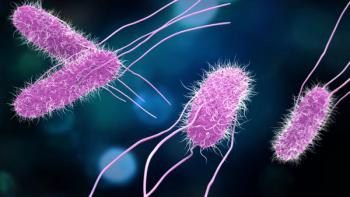
Patients With Post-COVID POTS Experience Disruptions in Circadian Blood Pressure Rhythm Regulation
Key Takeaways
- Post-COVID-19 POTS patients exhibit disrupted circadian BP rhythms, with increased nighttime systolic BP and daytime hypotensive episodes.
- POTS affects 20 million globally, with a significant rise in diagnoses post-pandemic, especially among long COVID patients.
Postural orthostatic tachycardia syndrome (POTS) diagnoses have greatly increased following the COVID-19 pandemic.
Research published in Hypertension found that patients with post-COVID-19 postural orthostatic tachycardia syndrome (POTS) experience disruptions of circadian blood pressure (BP) rhythm regulation, often demonstrating increased systolic BP (SBP) at night and increased daytime hypotensive episodes. The authors suggest their findings may create rationale for developing tailored BP treatments for patients with this condition.1
Approximately 20 million individuals around the world have developed POTS following the pandemic, and it affects approximately 30% of highly symptomatic patients with long COVID. Prior to the COVID-19 pandemic, it was a lesser-known condition. However, the significant rise in diagnoses following COVID-19 infection has increased POTS studies and awareness.1,2
POTS is a type of cardiovascular autonomic disorder characterized by increased heart rate when transitioning from sitting or lying down to standing up. It is caused when normal functioning of the body’s autonomic nervous system is impaired, leading to a lack of coordination between blood vessel constriction and heart rate response. POTS is more prevalent in younger individuals between the ages of 15 and 45 and appears to disproportionally affects women (≈80%).3
POTS can be caused by immunological stressors including viral infection, vaccination, trauma, pregnancy, surgery or psychosocial stress, as well as acute COVID-19 infection. Patients with POTS experience a variety of symptoms including reduce exercise capacity, heart palpitations, dizziness, fatigue, brain fog, and shortness of breath, as well as gastrointestinal disorders and musculoskeletal pain.3,4
As of 2024, there is no FDA approved therapy for POTS, so most medications provided to patients are off label. These commonly include fludrocortisone (Florinef; Paladin Pharma Inc) to increase salt retention and blood volume, pyridostigmine (Mestinon; McKesson) to reduce tachycardia, midodrine (Orvaten; Upsher Smith) for widespread vasoconstriction, or beta-blockers, which may reduce upright tachycardia. Other treatment suggestions include lifestyle modifications such as diet and exercise.4
In the case-control study, the researchers found that patients post-COVID-19 POTS not only experience heart rate complications, but also interruptions in BP control, suggesting the potential benefit of tailored BP therapy for patients. They evaluated 100 patients with post–COVID-19 new-onset POTS, which was diagnosed by a positive head-up tilt testing, compared with 100 healthy controls with a negative active standing test, no history of syncope, POTS, or endocrine disease. To determine the impact of post-COVID-19 POTS on BP, the researchers assessed 24-hour BP profiles for circadian BP variation including hypotensive SBP episodes (<80, <90, and <100 mm Hg).1
According to the data, patients with post-COVID-19 POTS experience significantly higher SBP at night with more SBP hypotensive episodes during the day. The logistic regression showed a higher mean 24-hour SBP (odds ratio, 1.08 [95% CI, 1.04–1.11]; P<.001) and nighttime SBP (odds ratio, 1.07 [95% CI, 1.04–1.10]; P<.001), regardless of age and sex.1
The researchers also reported that non-dipping and reverse dipping patterns were more frequent in patients with post-COVID-19 POTS (34% and 9%, respectively) compared with the control group (19% and 0%, respectively).1
Due to various limiting factors, further investigations are needed to further validate these findings. However, the study determined that there are BP disruptions associated with post-COVID-19 POTS, underscoring the potential negative consequences of COVID-19 infection on heart health.
REFERENCES
1. Johansson M, Ståhlberg M, Ricci F, et al. Blood pressure regulation in post–covid pots: beyond sinus tachycardia. Hypertension. November 11, 2024. doi:10.1161/HYPERTENSIONAHA.124.2367
2. Management of pots due to long covid. American Academy of Family Physicians. November 4, 2024. Accessed December 2, 2024. https://www.aafp.org/pubs/afp/afp-community-blog/entry/management-of-pots-due-to-long-covid.html#:~:text=POTS%20affects%20approximately%2030%25%20of,and%20muscle%20weakness%2C%20among%20others
3. Fedorowski A. Postural orthostatic tachycardia syndrome: clinical presentation, aetiology and management. J Intern Med. October 29, 2018. doi:10.1111/joim.12852
4. Postural orthostatic tachycardia syndrome (pots). Cleveland Clinic. September 9, 2022. Accessed December 2, 2024. https://my.clevelandclinic.org/health/diseases/16560-postural-orthostatic-tachycardia-syndrome-pots#symptoms-and-causes
Newsletter
Stay informed on drug updates, treatment guidelines, and pharmacy practice trends—subscribe to Pharmacy Times for weekly clinical insights.


















































































































































































































